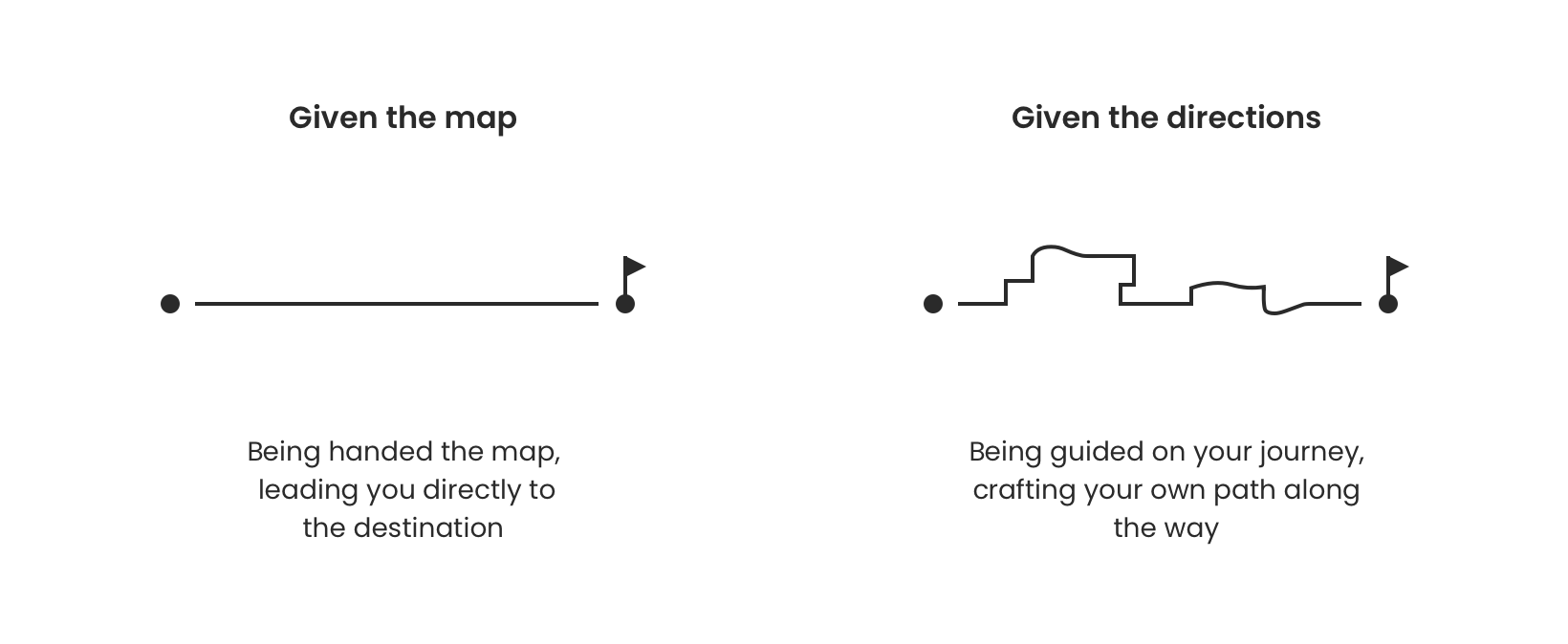When presented with a question, it’s natural for us to want to help – sometimes this can be in the form of providing a solution to the problem. Someone asks a question, we provide the answer and they have a solution that unblocks them. Whilst that solves a problem and clears their path for the short term, there can be a missed opportunity for long term development – providing guidance for that person to find the solution.
Let’s think of problem solving as a journey – we begin at the problem and end up at the destination. This journey presents a path for an individual to learn and explore, which can become a quicker route if presented with a shortcut. Travelling the path ourselves, with some guidance, allows us to build a map for ourselves and find our own way to the end. On the other hand, we can be handed that map and head straight to the end – but the price of that shortcut is paid in reduced learning opportunities.

Whilst when given that map we gain the knowledge to solving that problem, we miss out on the construction of the map. When it comes to creating maps for future journeys, the experience from previous explorations helps to provide us with insight to pave those paths. This allows us to focus more on the craft of the journey and how we get there, rather than just what is at the destination. This practice contributes to a more general understanding and problem solving experience, rather than how to solve a specific problem.
Whilst it may feel quicker to give a solution and move forward with things, it’s important to slow down and remember that experience is priceless and in the longer run, more important than the given solution. When presented with a question, giving some guidance on a subject in the form of questions gives that person some foundations to reflect and think into. This provides pointers for where they need to look next, or gives space to recognise what needs to be changed where they already are. Whilst you may know the answer, provide space and guidance for that person to discover the solution for themselves.
With that said, even with guidance to help reach a destination, sometimes we can get lost or travel in the wrong direction. As a mentor, it’s important to recognise that and navigate the level of guidance that you are giving. For some journeys it may be necessary to give more guidance than usual, provided that there is sufficient knowledge shared along the way. We still want people to reach that destination, giving what is required to reach it whilst also leaving space for discovery along the way.
Whilst it can be natural for us to respond with an answer, next time you are asked for help, try responding with a question.
